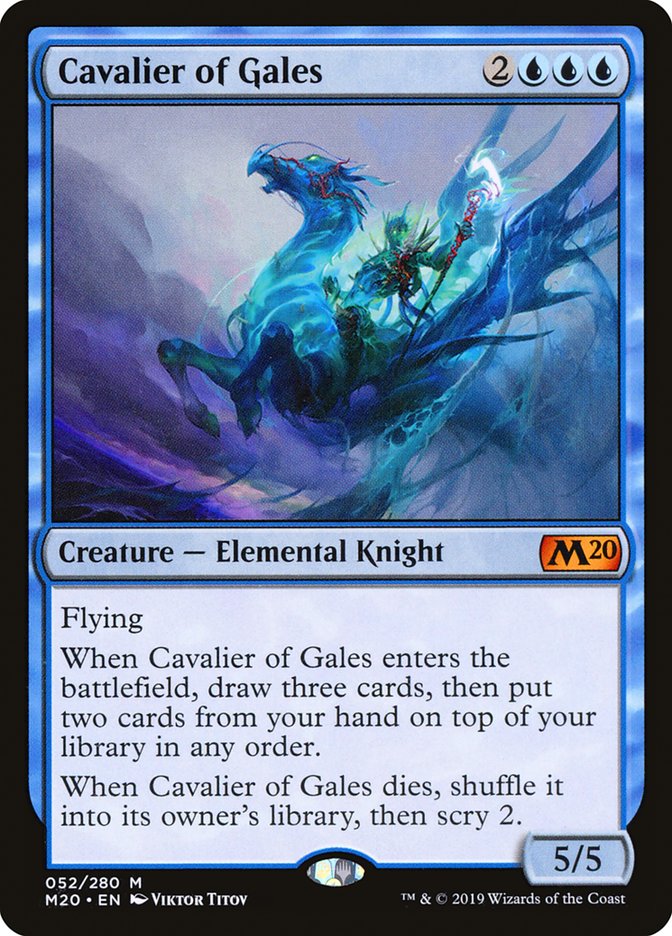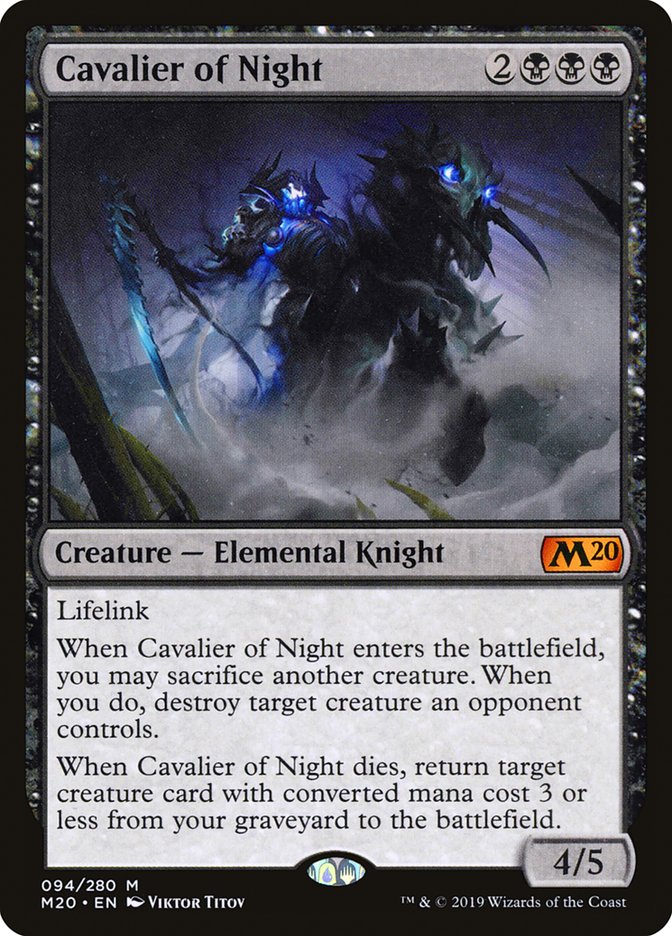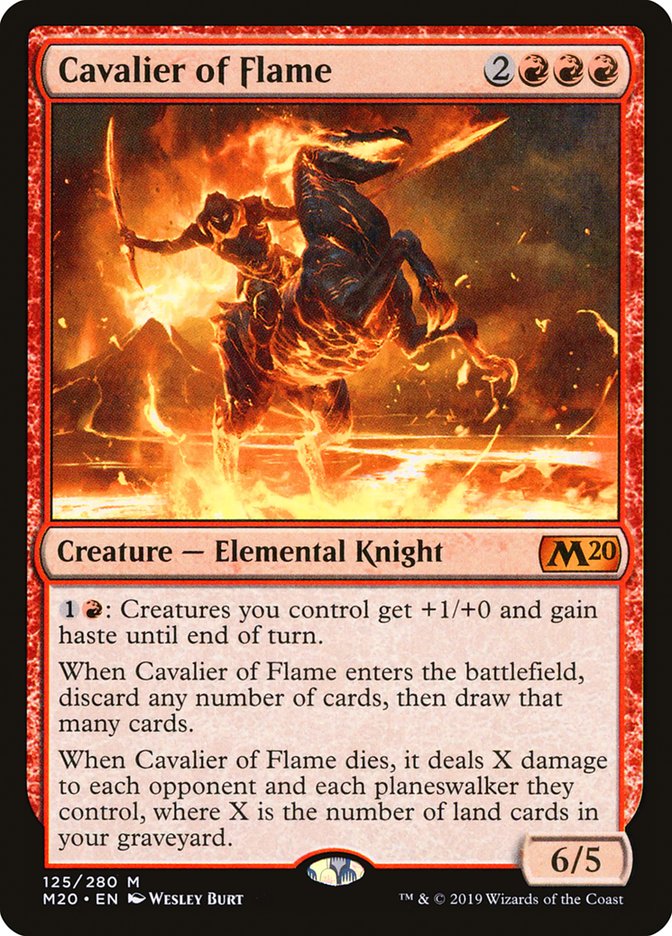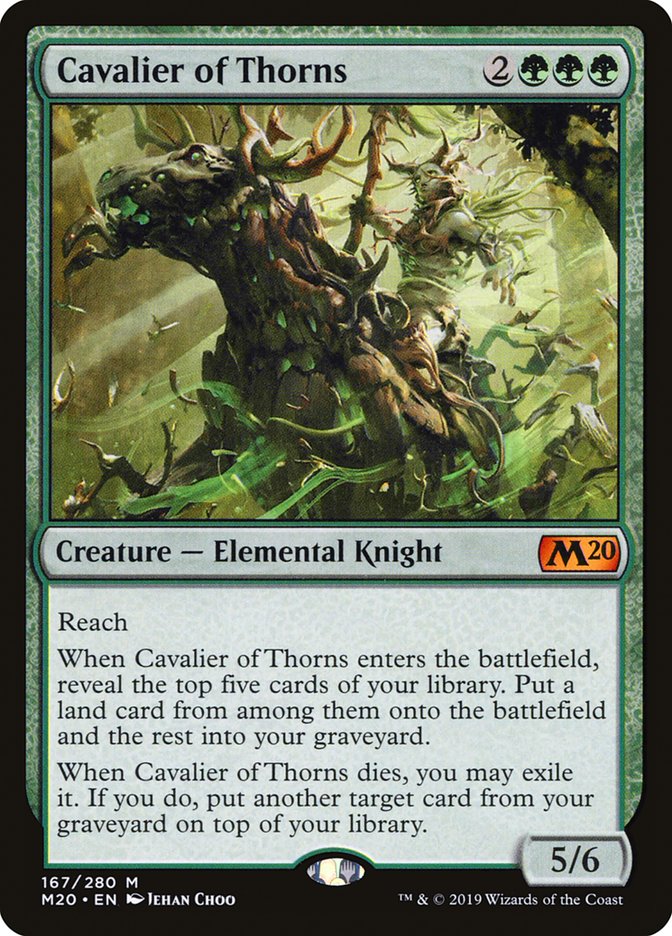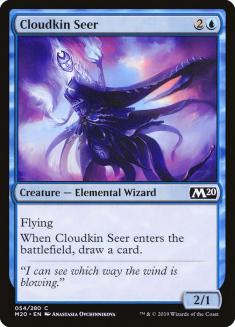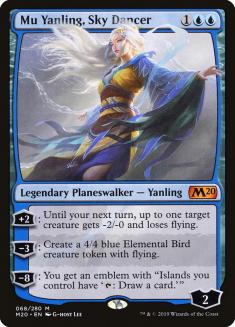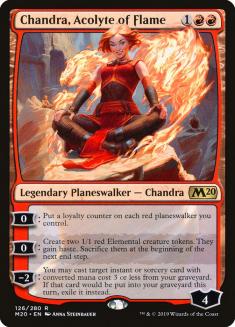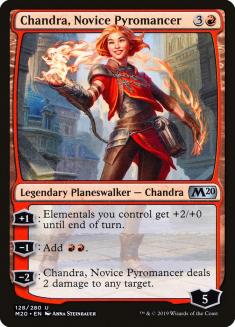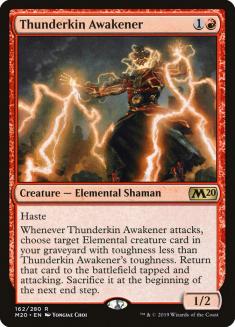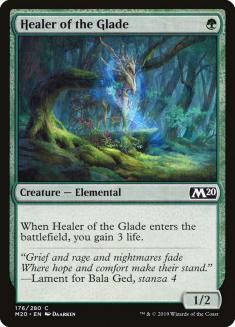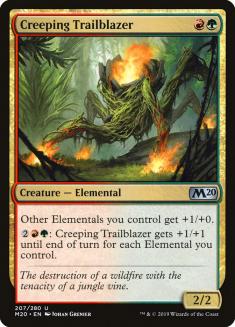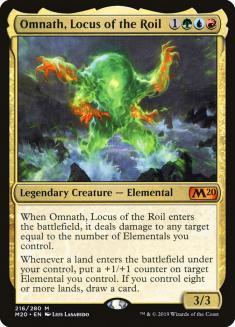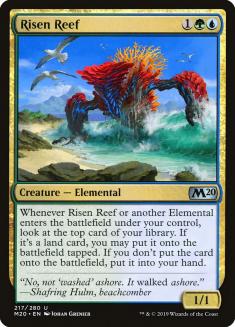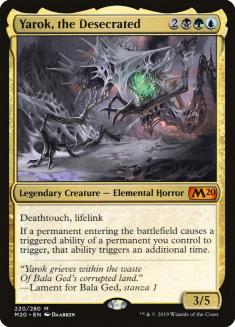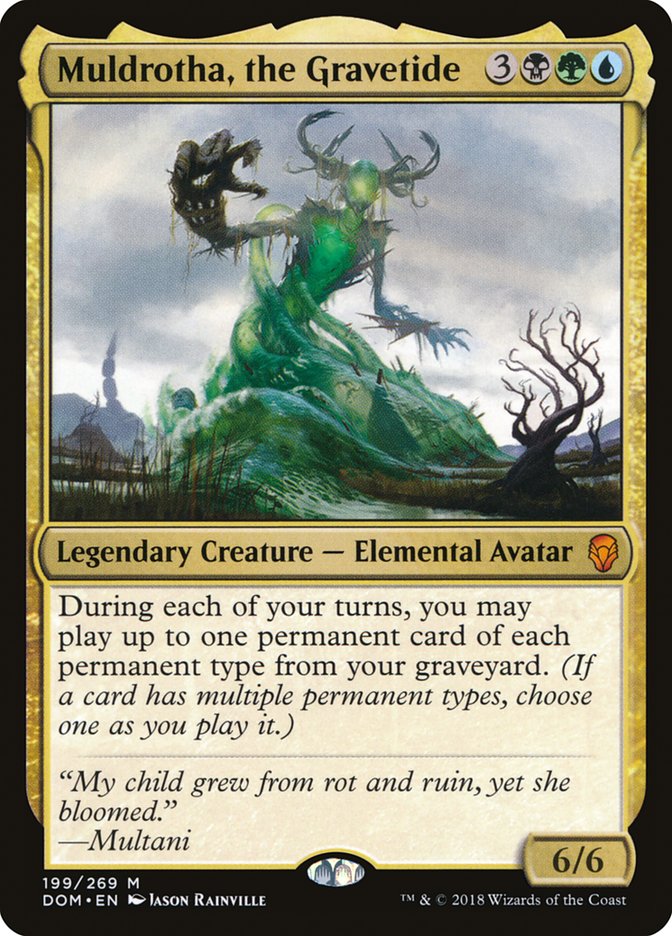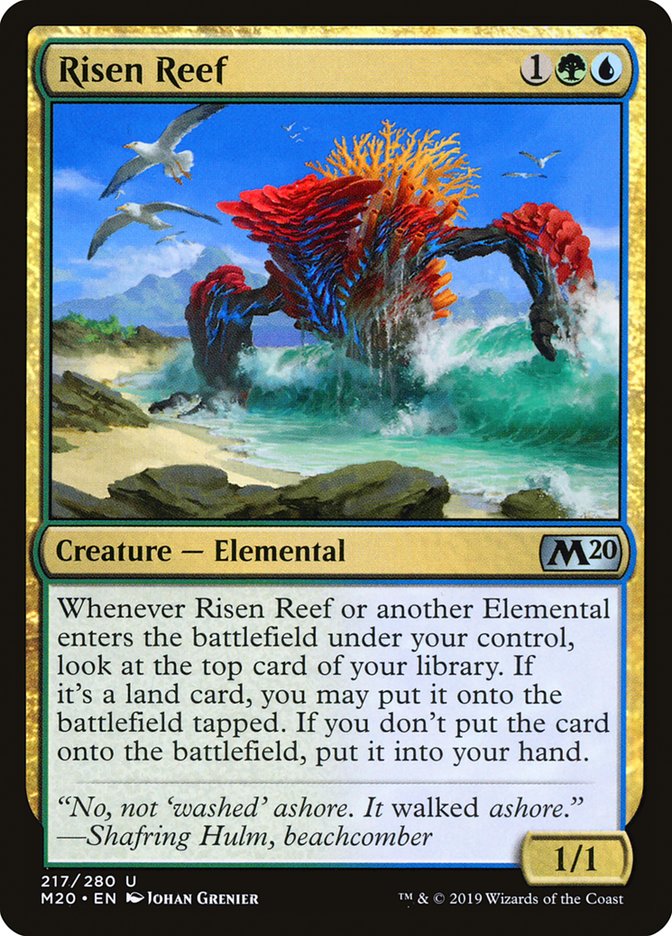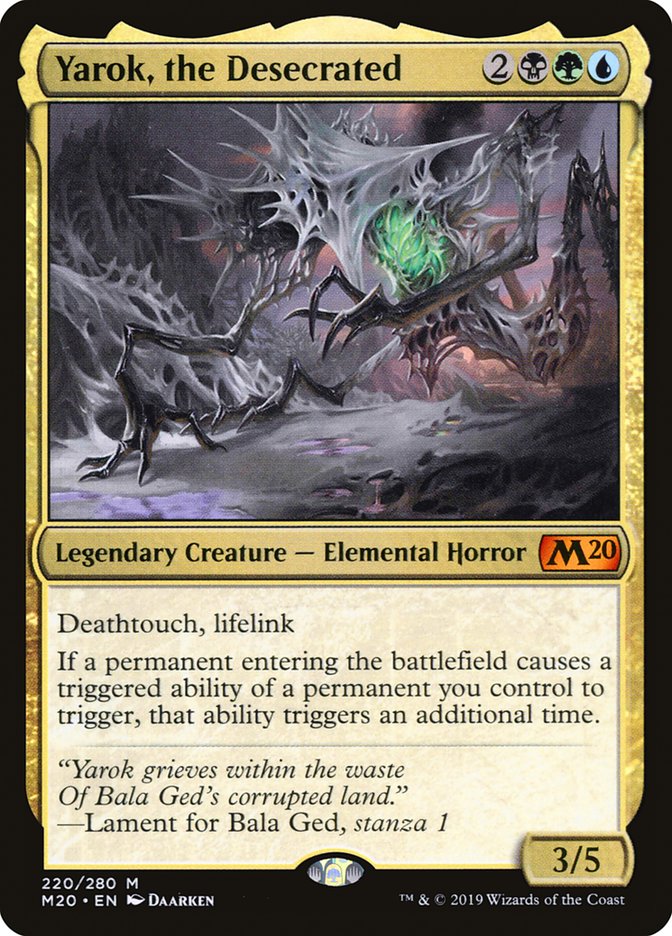Would you believe that another new Magic set is already on the horizon?
Coming fresh on the heels of Modern Horizons, Core Set 2020 is about to shake up Standard, and with the Standard Open in Worcester coming up soon, it’s time to put on the brewing caps to figure out what new cards might have an impact on Standard as we know it.
Of all of the themes of Core Set 2020, tribal synergies were one of the biggest. From the looks of it, Play Design was interested in giving the tribes of Ixalan a little bit of a boost on their way out the door from Standard rotation in the fall. The most interesting tribe to receive support in the set was not one of the Ixalan tribes, but yet another that hasn’t seen pointed support since the days of Lorwyn.
These five new Elemental Mythics are this set’s ode to the almighty Titans of yore, a nod not unlike the Souls from Magic 2015 that sought to emulate the power of the Titans, just…a little bit less powerful. While the Cavalier cycle features the flashiest cards of the Elemental tribe, a handful of other unique cards that care about the tribe will also be joining Standard in Core Set 2020:
For the most part, the tribe exists within the Temur wedge, as evidenced in part by one of the best payoffs on the above list being Omnath, Locus of the Roil. The one exception is Yarok, the Desecrated, who resides within the Sultai colors. Interestingly enough, there’s another certain Elemental that already resides within the Standard card pool:
My initial impression is that there are a couple of different routes you can go down regarding building Elemental decks. The Gruul and/or Temur color combination seems to be the way to go in trying to build a more aggressive or ramp shell and would be more interested in the payoff of the tribal synergy. A Sultai version utilizing Muldrotha and Yarok in some capacity also sounds intriguing, though it may be more difficult to find another Elemental-specific payoff.
At their core, one of the biggest reasons to focus on playing as many Elementals as possible centers around this little critter:
Risen Reef looks to do its best Coiling Oracle impression by providing a repeated card advantage engine low on the curve. Getting even one trigger out of the card is decent, and anything beyond a second trigger is just gravy. The possibility of ramping you into five mana plays even faster is also enticing and I imagine that every Elemental shell will want to start with at least four copies.
Let’s take a look at a more aggressive shell, splashing into blue for Risen Reef and Omnath:
Creatures (24)
- 4 Llanowar Elves
- 4 Paradise Druid
- 4 Living Twister
- 4 Creeping Trailblazer
- 4 Risen Reef
- 4 Omnath, Locus of the Roil
Planeswalkers (11)
- 4 Nissa, Who Shakes the World
- 3 Chandra, Acolyte of Flame
- 2 Chandra, Novice Pyromancer
- 2 Chandra, Awakened Inferno
Lands (25)

This is more of an amalgamation of cards that likely belong in the shell as opposed to a tuned list, but the basic premise is apparent.
Omnath, Risen Reef, and the Chandras all serve to give you a payoff for being in the Elemental tribe, while the rest of the deck consists of cards that are just solid on rate. Nissa, Who Shakes the World, an all-star towards the end of War of the Spark Standard, produces Elementals herself and works well with Omnath to pump the vigilance lands into 4/4s, 5/5s, and beyond. The biggest issue I’d like to work out with a list like this is the vast amount of mana the deck will typically have access to in a given game versus the amount of ways to spend it. Omnath provides some protection from flooding, and Living Twister and Creeping Trailblazer both have mana sinks, but there might be a shell that is interested in going a bit bigger.
Maybe something like this…
Creatures (25)
- 4 Llanowar Elves
- 2 Multani, Yavimaya's Avatar
- 4 Paradise Druid
- 4 Living Twister
- 4 Risen Reef
- 4 Omnath, Locus of the Roil
- 3 Cavalier of Thorns
Planeswalkers (6)
Lands (25)
Spells (4)

A shift up on the curve gives this deck a lot more late-game power. Multani and Cavalier of Thorns are both easy to ramp into thanks to Nissa, Who Shakes the World, and Growth Spiral gives the deck a bit more consistency in the early game for reaching the late stages in exchange for some of the more aggressive angle provided by the other Chandras. Multani and Omnath both encourage you to have as many lands on the battlefield as possible, so it is a possibility some of the mana creatures could be translated into hard ramp spells.
With ramp and aggro builds covered, I’d like to substitute out the red and try black to make use of the powerful Sultai Elementals available in Yarok and Muldrotha. Given that Yarok, the Desecrated works pretty well with the explore package, Sultai Midrange seemed like a reasonable place to start. Wildgrowth Walker is even an Elemental itself!
Creatures (32)
- 4 Llanowar Elves
- 3 Hostage Taker
- 4 Wildgrowth Walker
- 4 Merfolk Branchwalker
- 4 Jadelight Ranger
- 2 Muldrotha, the Gravetide
- 4 Hydroid Krasis
- 4 Risen Reef
- 3 Yarok, the Desecrated
Planeswalkers (4)
Lands (24)

Yarok and Risen Reef play very nicely with each other in this list as well, and Muldrotha helps keep the value engine running deep into the late-game. The biggest thing I’d like to try to add to this Sultai list is a bit more spot removal, and that can probably come at the expensive of some copies of the Nissa, Who Shakes the World. Hostage Taker and potentially long-forgotten Sultai staple Ravenous Chupacabra are great with Yarok’s Panharmonicon-esque ability, so it’s possible more of that effect is also warranted.
Yarok itself has other applications outside of a Sultai shell. Yarok and Omnath play fantastically with one another, and it’s possible a four-color version could be tied together thanks to great mana in Standard and the powerful Paradise Druid to help tie it all together.
Realistically, I’d want to start with the above options first, as they’re more conservative and more likely to be successful. The red lists interest me the most, given that I think Omnath, Locus of the Roil is the best payoff for the tribe, only closely followed by Risen Reef. Both cards need to line up well against the other decks in Standard to be successful, so it will be important to see how they shake out in the coming weeks leading up to SCG Worcester.
In summary, this is how I’d look to build my Elemental decks from the get-go:
- An aggressive Gruul-based version, utilizing large numbers of Chandra, Acolyte of Flame to help commit to the battlefield quickly.
- A Temur version looking to maximize the payoff of Risen Reef and Omnath, Locus of the Roil.
- A Sultai version that attempts to abuse Yarok’s enters-the-battlefield doubling ability.
- A four-color version that utilizes Yarok and Omnath in tandem to provide a high amount of value.
Additionally, regarding the Cavaliers, I’m initially a little low on most of them, but I could be sorely mistaken. It’s possible that Cavalier of Flame makes a great curve-topper in the Gruul builds, and I think that the Cavalier of Thorns works quite well with Omnath (who is, again, the best payoff in the tribe in my opinion). The heavy monocolored mana costs frighten me in three-color decks, but it’s possible that my concern is overblown, given that I was casting Mass Manipulation in a three-color Bant deck not too long ago!
Core Set 2020 features a lot of powerful new cards, along with a handful of old fan-favorites like the Leyline cycle. Esper Hero cemented itself as the best deck to be playing by the end of War of the Spark Standard, in no small part thanks to the infamous duo of Teferi, Time Raveler and Teferi, Hero of Dominaria. Whether the Esper menace can be dethroned in the early stages of this brave new Standard format remains to be seen, but I have high hopes that Core Set 2020 will shake things up plenty.
If you are interested in seeing some of these decks in action, I will be almost assuredly be trying these lists out today during the Core Set 2020 Preview Stream on Magic Arena. Wizards of the Coast once more graciously invited me to participate in the event, and I look forward to trying out some sweet new cards.
Next week, I’ll report back with some early findings from testing Core Set 2020 Standard to help get you prepared for the Standard Open in Worcester.



